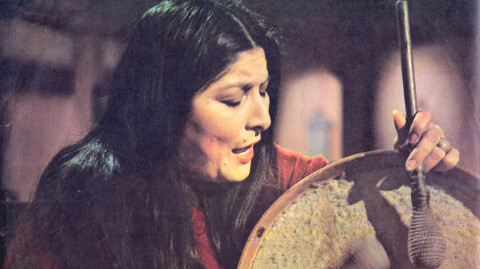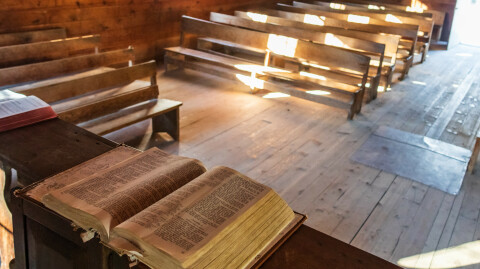TLDR: Churches and institutions with endowments are in better position to withstand crisis situations such as Pandemics, contractions, and transitions. The time has come for Saint Dunstan’s to fund a legacy trust properly. Read on for more.
I have been in the search committee for the Dean and President of Seminary of the Southwest for the last several months. While doing this work, I have learned about the need for trust funds for all churches and institutions. A lack of appropriate funding to meet future needs has been at the heart of the closing, merging, or restructuring of a number of seminaries. With a reduction of enrollments due to the vocational crisis in most mainline denominations, seminaries that have been tuition-dependent have had a really difficult time over the last ten years. Of the eleven residential seminaries in the Episcopal Church when I went to seminary, only four remain: Nashotah House, Virginia Theological Seminary, University of the South (Sewanee), and Seminary of the Southwest (Austin.) The rest have merged with other institutions or have shifted to hybrid models of formation. The four institutions have been able to survive primarily because of the support of their historic trust funds. Continuing to build these funds will prove critical for them in the future. Without them the future remains very uncertain.
Recently, I heard of a neighboring Episcopal Church that has done a great job of building their trust funds over the past twenty years. They are now able to compete for top notch clergy, to start a number of creative initiatives, and to fund operations, even when they contracted during the Covid-19 Pandemic. I celebrate these efforts, even as I worry about our own situation. About the same time they developed their funds (twenty or so years ago,) your Rector at the time held a number of well-attended meetings on planned giving and trust fund development here at Saint Dunstan’s. Later on, an associate led a Financial Peace University course that was very popular. And, around the same time, the Diocese sent speakers to both churches to lead a number of conversations on legacy giving. Yet, whereas the other church had saved several million dollars in trusts by 2020, our legacy fund remained extremely underdeveloped. In fact, by early 2020 this fund had less than 100k in investments. The generosity of Saint Dunstan’s during those twenty years went to pay down debt and to maintain our existing buildings. Thank you for your generosity and commitment. But now, we must turn our attention to our legacy fund.
I do believe that churches with healthy trust funds will have a better chance of surviving the various trends threatening the Episcopal Church. Let me just give you an example: A four-million-dollar trust fund with a 4% annual spend-rate provides the budget of a church about $160,000 every year. This would be almost 13% of our annual budget, and it would fund the full salary and benefits of a Rector in perpetuity. Imagine a trust of seven to ten million dollars, which is fairly common for churches of our size. We are talking about hundreds of thousands of dollars every year which could give a real respite to budgets at times of declines, pandemics, and transitions between rectors. We have an incredible vision for our church and God is blessing us with growth, but we need to build other sources of financial support in order to ensure the continuity of our ministries. God has a plan for us, but that plan will require partners in mission.
Now, I appreciate the historical reluctance of many churches to create trust funds: a. It will reduce stewardship because parishioners will think we don’t need their support. b. Churches with trust funds rely more on the sock market than on God. c. God will provide what we need in due time and there is no need to be anxious or worried. In fact, excessive worrying about money is a sin. d. restrictive funds give an impression of resources, but in fact unless you are spending the money for specific purposes dictated by the fund you can’t touch the money for operations. e. Endowed churches spend more time on portfolio management than on ministry, etc., etc. I empathize with these sentiments, but many of these apprehensions are just not correct. I came from two well-endowed churches in Iowa and Louisiana. Knowing we had a safety net for times of crisis allowed us great freedom and creativity to create new ministries, advance social causes, preemptively maintain buildings and grounds before things broke and we would have to spend more money to repair or replace them, etc. I never had to worry about whether I had to use a line of credit to make payroll, or whether I had resources to hire an Associate when we needed one.
We seldom think of Genesis 41:34-36 when thinking about the future, yet I find this passage to be a great model for us. Joseph says, “Let Pharaoh proceed to… take one-fifth of the produce of the land of Egypt during the seven plenteous years. Let them gather all the food of these good years that are coming… That food shall be a reserve for the land against the seven years of famine that are to befall the land of Egypt, so that the land may not perish through the famine.” This is what Proverbs 21:5 states, “The plans of the diligent lead surely to abundance.” We know at time of contraction is a real possibility for the Episcopal Church. We can already see this in various places in this country. The time to prepare for an uncertain future is now.
The traditional way to grow trusts in most institutions is through planned giving and one-time gifts. What this means is that in addition to our annual pledge, we need to think about allocating a portion of our estate to the future of Saint Dunstan’s. We have seen how even small percentages can have a significant impact twenty years down the road. I also encourage those of you who are in a position to give a one-time gift to our legacy fund to do so now. We need to increase this fund soon, before another crisis strikes. I would love to leave Saint Dunstan’s when I retire (way in the future) with a balance sheet of four to five million dollars in trusts. I believe this is possible and reasonable for a church of our size, especially now that we are growing. Prayerfully consider an estate gift or a one-time gift for our Church. Our future depends on it.
May our God continue to bless you,
Fr. Roman+





